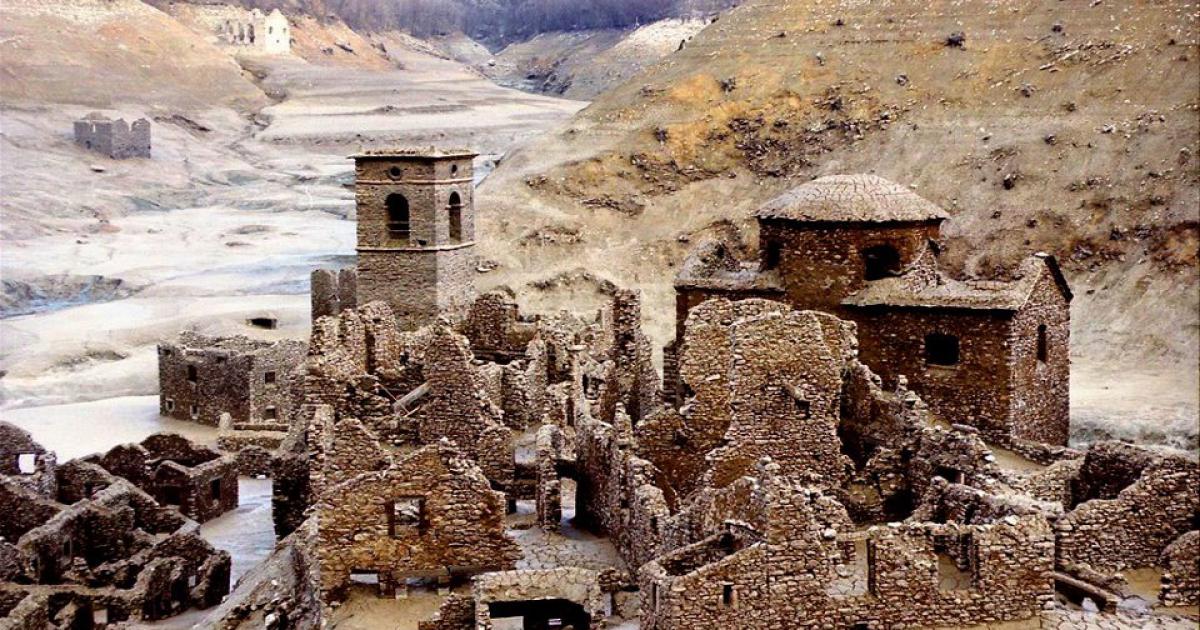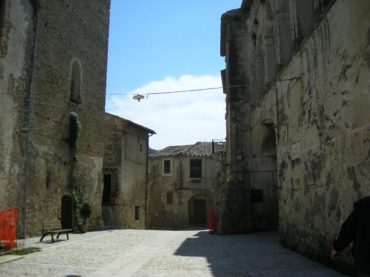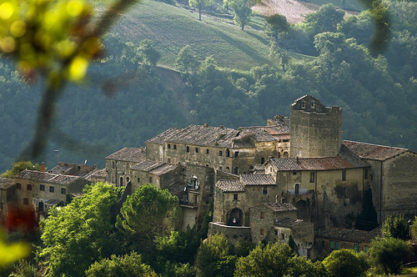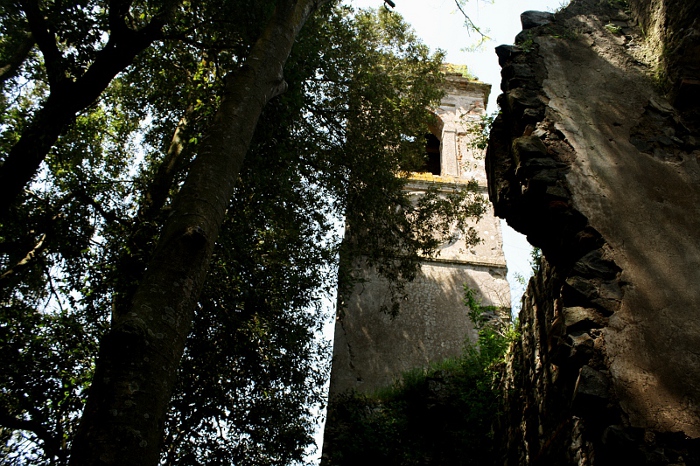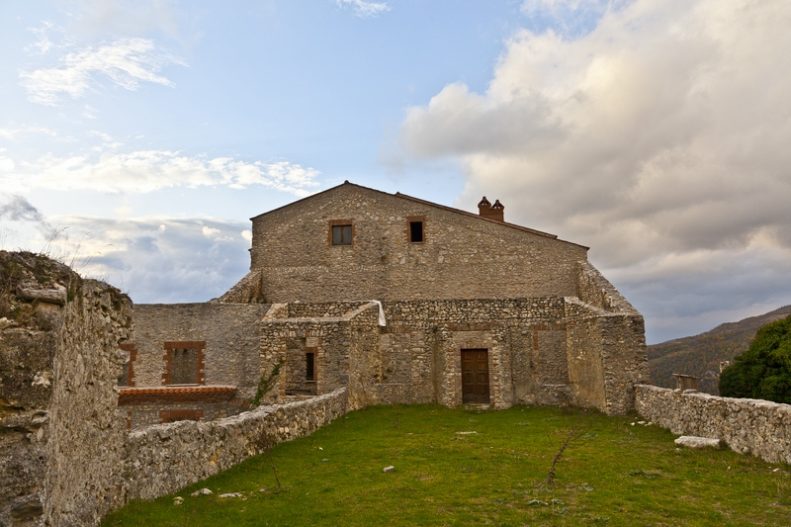Abandoned places in Italy: forgotten villages and ancient treasures
READ ME IN  Italiano
Italiano
«Italy is a country rich with mysterious places, where time seems to have stopped, that deserve to be valued and visited at least once in life. Here are 10 abandoned places in Italy that you must visit.»
It is well known, Italy is a country rich in culture and enchanting places to visit. The wealth of our country is not only found in large cities and museums, there are in fact more than 6,000 abandoned places in Italy, without inhabitants and immersed in the nature, not to be ignored. They are called “ghost towns“, ancient villages that once lived a real golden age, but then, over time, have been abandoned for reasons ranging from epidemics, environmental catastrophes, wars or exhaustion of primary goods. Pieces of Italy whose disappearance involves not only the loss of stories but also of potential tourist and housing wealth, so much so that in recent years it has been thought to put these towns for sale so that they are not forgotten and, above all, do not fall into ruin .
The phenomenon of the abandoned places in Italy mainly concerns the center-south and the Apennine areas: the depopulation took place especially after the Second World War when the inhabitants moved to the big cities to look for work, abandoning those ancient villages that had once been chosen precisely for their strategic position and their isolation, ideal for protecting those who lived there.
Snap Italy lets you discover some of the most evocative abandoned villages in Italy.
Civita di Bagnoregio
Ancient village of Etruscan origins, in the province of Viterbo, in Lazio. It is nicknamed the “City that dies”, the name given to it by one of its illustrious inhabitants of the past, the writer and author of numerous essays and novels, Bonaventura Tacchi, in 1896. It is one of the most evocative abandoned places in Italy, left by citizens between 1600 and 1700 due to erosion that was causing it to collapse, and of the many earthquakes that hit it, in particular that of 1794 that caused the narrow natural bridge that connected Civita and Bagnoregio to collapse, making almost all the population move in the near Rota. The bridge was replaced by another brick, which was then destroyed again by the Germans during the Second World War. Only in 1965 a new connection between the two cities was rebuilt and is still in use, a bridge 300 meters long with numerous steep slopes: certainly it is a tiring route but it offers a splendid panoramic view. The city now has less than ten inhabitants, but remains a sought-after tourist destination capable of catapulting into the past those who enter it, thanks to the low houses typical of the Middle Ages. In the main square you can visit the cathedral, the Church of San Donato, which houses the relics of Santa Vittoria, which until the mid-800 was the patron saint of the city.
Craco
A medieval city in the province of Matera, in Basilicata, it has less than 800 inhabitants, after the city was abandoned in the sixties due to a landslide of large proportions and then by a flood that in 1972 which worsened the situation, so that then in 1980, due to an earthquake, Craco was completely abandoned, making it a real ghost town. This condition has made the already evocative landscape even more interesting, so much that many directors have decided to use the city as a set for their films, such as Agent 007 – Quantum of Solace by Marc Forster with Daniel Craig and Giancarlo Giannini, Basilicata coast to coast by Rocco Papaleo and La passione di Cristo by Mel Gibson. In 2010, the village entered the list of monuments to be safeguarded by the World Monuments Fund.
Valle Piola
It is one of the most evocative abandoned places in Italy, nestled in the Laga mountains, in the province of Teramo. Completely uninhabited since 1977, the year in which even the last resident family abandoned it. In April 2011 the entire village was put on sale at the figure of 550,000 euros. The reasons for the low price are to be found in the intention to find a buyer who can undertake a process of general restructuring. Since 2012, in August, the annual meeting of the Memorial Cesare Foglia cavaliers takes place.
Consonno
The history of this town is very peculiar. It’s in the province of Lecco and an eccentric industrialist, Mario Bagno, bought it in 1962 and had it demolished to build a large shopping and entertainment center. Bagno wanted to transform this place surrounded by greenery in the city of play and perdition. Commercial and entertainment buildings were constructed in the most varied architectural forms, a hill was even flattened to improve the panorama. After the initial attention, a series of landslides swept away the road that connected Consonno to Olginate and the city was forgotten even before it was completed. During 2014 they received the announcement of eviction of the last four inhabitants due to the sale of the town.
Fabbriche di Carregine
Founded in the 13th century by a group of blacksmiths from Brescia, Fabbriche di Careggine in the province of Lucca has a charming medieval village submerged by the water of the dam, built between 1947 and 1953. You can visit the village only every ten years, during the emptying of the lake for the maintenance of the dam; the last time the country has re-emerged was in 1994, and it will be possible to admire it again in 2016, an exceptional opportunity to visit one of the most evocative abandoned places in Italy.
Ingurtosu e Naracauli
Two abandoned places in Italy and one of the most incredible mining villages in Italy, in the area of Arbus, in the heart of Sardinia. Quarry mining activities started in 1855, and reached their peak at the beginning of the 20th century. Then, during the Second World War, the first problems began. In 1943 its first major crisis, when so many workers were fired. During the post-war period there was a small recovery, but it never brought the activity back to its former glory. From these mines, until 1968, silver, lead and zinc were extracted. In the village there were mainly managers, employees and technicians and in 1968 the mine was definitively closed. Ingurtosu is a monument of industrial mining archeology and is part of the Regional and Environmental Geomining Park of the Sardinia Region, inserted in the UNESCO Geo-Parks network.
Fianello
This ancient village is located a few kilometers from the border between Lazio and Umbria, in a scenario virtually untouched in the territory of the City of Montebuono (Rieti). The formation of the village dates back to the medieval period, as evidenced by the numerous documents found both on site and in the famous Abbey of Farfa. The village, closed by two gates, is perched on a hill about a hundred meters from the valley floor and in the small main square there is the Orsini Castle, the church of S. Giovanni Battista and the medieval Lombard tower, a rare example of a pentagonal tower with sail vault. The country was slowly abandoned since 1950 and then definitively uninhabited as a result of the Green Plan of 1961, which encouraged the construction of farmhouses in agricultural land. To date, many individuals have decided to invest to recover the homes of Fianello, among them many come from Germany, Belgium and Holland. In Fianello, despite the presence of some cultural activities (guided tours, cultural itineraries, historical re-enactments, etc.) there is only one inhabitant and the renovated houses are used only during the week-end or during the summer.
Galeria Antica
A real “ghost town”, not only because of the abandonment dating back to the mid-18th century, but also because of many legends concerning the ghosts that infested the ruins of this ancient village. Immersed in the heart of a protected natural area of 40 hectares, in the 49th area of the Municipality of Rome (part of the XIV Town Hall), Galeria Antica has been the venue of numerous film sets. The last inhabitant of the village left the town in 1809, but what is particularly fascinating is the hasty abandonment of the inhabitants of the city from the early 19th century. The local people escaped from the city, leaving not only the work tools and furnished houses, but even the corpses on the hearses of the time. The bodies were found years after the abandonment of Galeria and the old inhabitants had moved just one kilometer from the city, founding the village of Santa Maria di Galera Nuova.
Castrum Antoni (Antuni)
On top of Mount Antuni, connected by a thin isthmus to the mainland, the hill is almost completely surrounded by the Turano Lake. The foundation of the village dates back to the 11th century and after passing into the hands of several owners, in 1832 the fief of Antuni was erected as a principality by Gregory XVI in favor of the Prince Urban. In 1944, during the Second World War, due to an error, a bombing hit the town, destroying many houses, the main church and damaging the Dragon Castle. Since 1950 it has been a totally uninhabited town, but since 1999, thanks to the restoration work, it is possible to visit some glimpses of the ancient village.
Monterano Vecchio
In the municipal territory of Canale Monterano, in the Province of Rome, rises the tuffaceous rock on which Monterano rests. The site of a settlement already in the Bronze Age, in the Middle Ages it became the episcopal seat of the powerful diocese which included the lands between Lake Bracciano and the Tolfa mountains, then in the 11th century it became property of the Abbey of San Paolo in Rome, later it became a fief of the Anguillara (XIV century) and then a duchy of powerful families close to the Papacy, like the Orsini. In 1679, at the behest of Prince Altieri, Gian Lorenzo Bernini transformed the Monteranese Fortress into a ducal palace, also building the now famous Lion Fountain. In 1799 the abandonment of the village began due to a looting by the French troops and the abandonment ended in the following years due to malaria. Here films like Ben-Hur and Il Marchese del Grillo were filmed, golden films of the cinema that have contributed to increase the appeal of one of the most evocative abandoned places in Italy.
Federica Mei
READ ME IN  Italiano
Italiano


